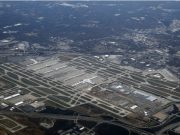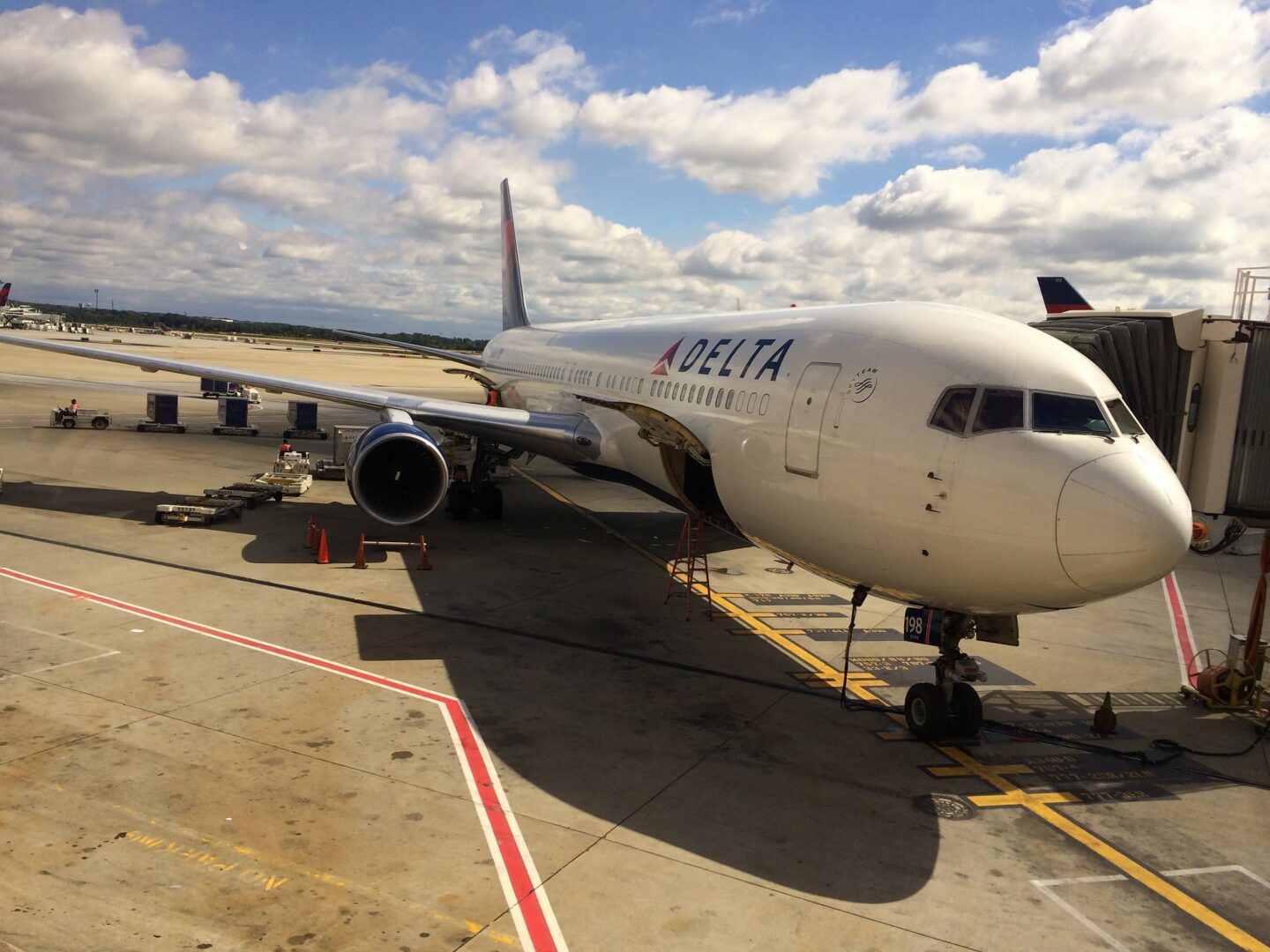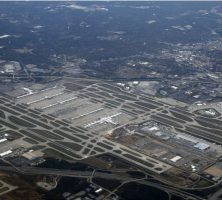Hartsfield-Jackson Atlanta International Airport is one of the busiest airports in the world. In 2019 more than 110 million passengers traveled through Hartsfield-Jackson. Monthly the airport handles about 56,000 metric tons of mail and cargo.
The facility is named after two important Georgia politicians: William B. Hartsfield and Maynard Jackson. Hartsfield, a former alderman and mayor of the city of Atlanta, founded the airport at the site of an abandoned racetrack in 1925 and became its first commissioner. Although several options were considered for the site of the airport, the racetrack was chosen because it offered room for expansion–an important feature given that Atlanta had been selected as a distribution point on the federal mail route from New York to Miami. With support from the city and the attraction of such companies as Delta Air Lines and Eastern Air Lines, Hartsfield Airport grew quickly. The name Jackson was added to Hartsfield Atlanta International Airport in 2003, after the death of former Atlanta mayor Maynard Jackson, who played a vital role in the redevelopment of the airport in the 1970s. Jackson was the first African American to serve as mayor of a major southern city.
Facilities
By any measure Hartsfield-Jackson Airport is big. The entire complex covers 4,700 acres and the terminal complex covers 130 acres. It houses more than 200 concession outlets, including food and beverage, retail and convenience, and staffed service outlets. North Terminal and South Terminal are where passengers purchase tickets, check in, and claim their baggage. Passengers pass through security in Concourse T, which also houses fifteen gates. Once inside the secure area, 192 gates—in Concourses A through F—can be reached by an underground transportation mall. In addition to moving sidewalks, nine four-car trains operate on tracks that run along both sides of the transportation mall to carry passengers between concourses. Having passengers move underground allows even the tallest aircraft (the tails of some air transport jets are more than sixty feet high) to taxi directly to its gate from any part of the airport.
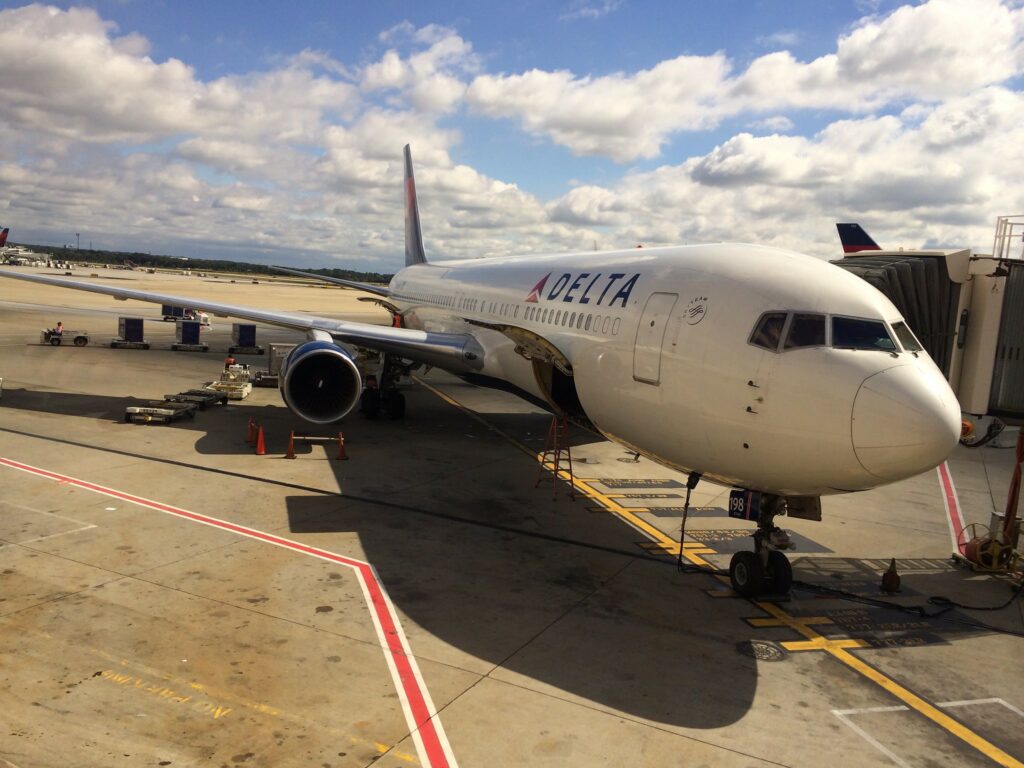
Hartsfield-Jackson Airport is located in Clayton County approximately ten miles south of downtown Atlanta, at an elevation of 1,026 feet above sea level. To reach it, passengers can use the Metropolitan Atlanta Rapid Transit Authority (MARTA) or drive to one of the 30,000 parking spots around the airport (including the Park and Ride facilities). Three hundred taxis also wait on call at a time, and more than 150 limousine, rental car, and shuttle bus companies serve the airport.
Runways
Hartsfield-Jackson’s grounds cover 4,700 acres and contain five runways. All runways run east to west, with a pair of runways north of the terminals and three runways south of the terminals. Having five parallel runways makes it possible for multiple aircraft to take off and land at the same time without concerns that their flight paths will cross. This allows all the runways to be in near-continuous operation; in fair weather more than 90 aircraft may land and 100 may depart in an hour.
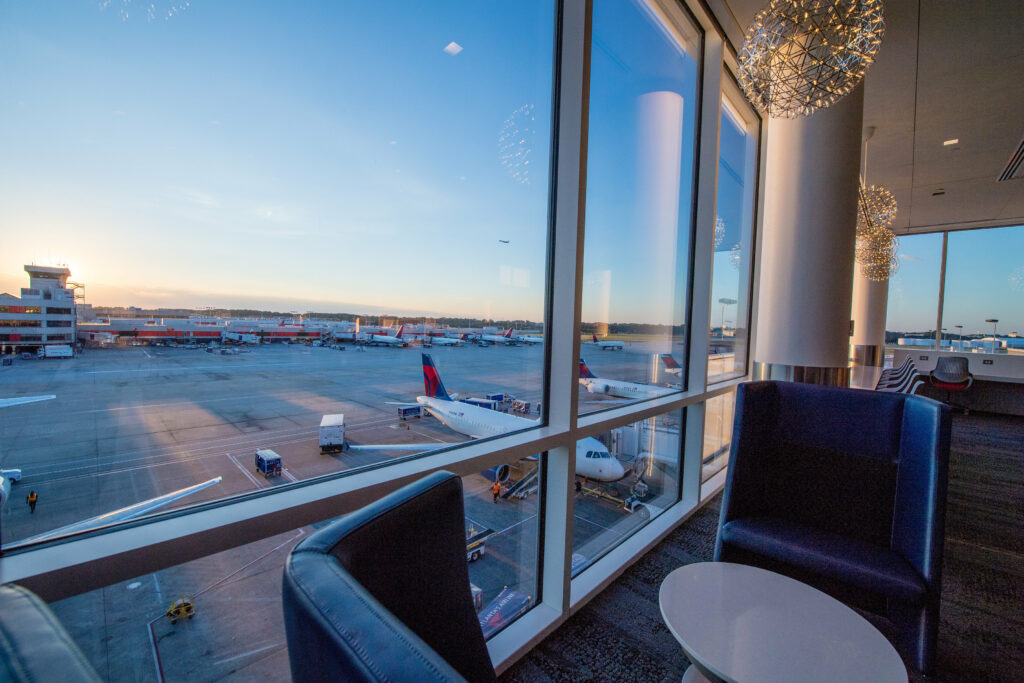
The inside runways, closest to the terminals, are the longest; one is 12,390 feet (more than two miles) in length, and the other is 10,000 feet long. The remaining three are each 9,000 feet long. Jets can be much heavier when they take off than when they land (because of the fuel they burn in flight), so the length of these inside runways must provide aircraft fully laden with passengers, cargo, and fuel with the distance needed to accelerate safely to takeoff speed or to stop just before takeoff if something goes wrong.
Two of the outside runways, used for landing, have specialized Category III Instrument Landing Systems (ILS) that provide precise radio beams for aircraft to follow down to the runway. By using these radio beams, the most modern aircraft can land themselves during weather conditions in which the visibility and ceiling prevent the pilots from seeing the runway until they have landed.
Air Traffic Control
Each pair of runways has its own set of two air traffic controllers, who work for the Federal Aviation Administration (FAA). The ground controller is responsible for steering aircraft between the ramps and the runways. The tower controller is responsible for aircraft immediately before they land, while they are on the runway, and until just after they take off. Other controllers help with such tasks as delivering predeparture clearances to aircraft at the gate before they push back. These controllers sit in the tower at the airport (Atlanta ATCT) and use primarily their eyes and binoculars to keep track of the airplanes, although they have radar displays available and they keep paper descriptions (called flight strips) in a rack in front of them, which provide information about each flight in a standard format. When an aircraft passes from the ground to the tower controller (or vice versa), the ground controller gives the flight strip to the tower controller as a signal of the transferring of responsibility.
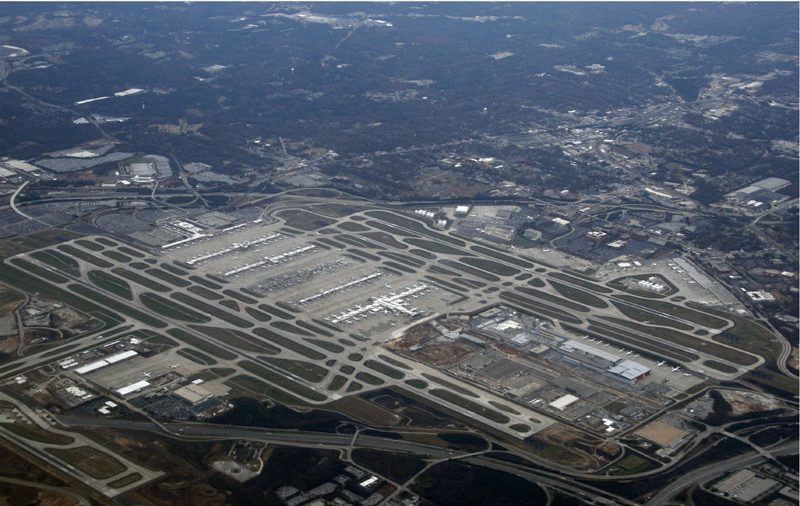
When aircraft are in the air approaching or departing the airport but are out of range of the tower controllers, they are monitored by approach controllers in the Terminal Radar Control facility, or TRACON, located in nearby Peachtree City. These controllers monitor the aircraft through radar screens and flight strips only, as they control aircraft over distances too far to see. Arriving aircraft are steered into the TRACON’s airspace through four corner posts, located at points northeast, northwest, southwest, and southeast about forty miles away from the airport. Departing aircraft are steered away from the runway toward eight departure points, two each between the corner posts. These arrival and departure routes act like on- and off-ramps for the runways so that the arrival and departure aircraft can follow steady, gently climbing and descending traffic flows that do not interfere with one another and that stay clear of the smaller airports in the Atlanta area.
Outside of the TRACON airspace, aircraft are at en-route altitudes and are handled by the Air Route Traffic Control Center (Atlanta ARTCC) located in Hampton (Henry County). This center uses long-range radar (including feeds from remote radar stations) and controls air traffic over most of Georgia and Alabama, extending north through North Carolina and Tennessee into Kentucky, West Virginia, and Virginia.
Many different agencies help operate Hartsfield-Jackson Airport. The FAA provides the air traffic controllers, who are responsible for aircraft when they are on the taxiways and runways and in the air. When aircraft are on the ramp close to the terminals or at the gate, they are controlled by ramp controllers sitting in their observation rooms or ramp towers on top of the terminal buildings; the airlines using a ramp provide its ramp controllers. The airport itself is operated by the Department of Aviation of the City of Atlanta.
Airport Expansion
In 2000 the Atlanta City Council approved a capital improvement program for Hartsfield-Jackson Airport, aimed at building and maintaining the facilities necessary to reduce flight delays and handle increased travel demand. In 2006 the fifth runway and a 400-foot air traffic control tower, the tallest in North America, as well as new baggage screening rooms, were completed as part of the program. In 2012, the final component of the 1999 Master Plan was completed when the Maynard H. Jackson Jr. International Terminal opened with twelve new gates. With the 1999 Master Plan fully implemented, administrators began implementing the 2011 Master Plan developed by the City of Atlanta Department of Aviation. In this twenty-year plan, goals for expansion include renovation and modernization of the Domestic Terminal, expansion of cargo operations and concourses, replacement of some parking facilities, and preparation for a hotel and mixed-use development.


